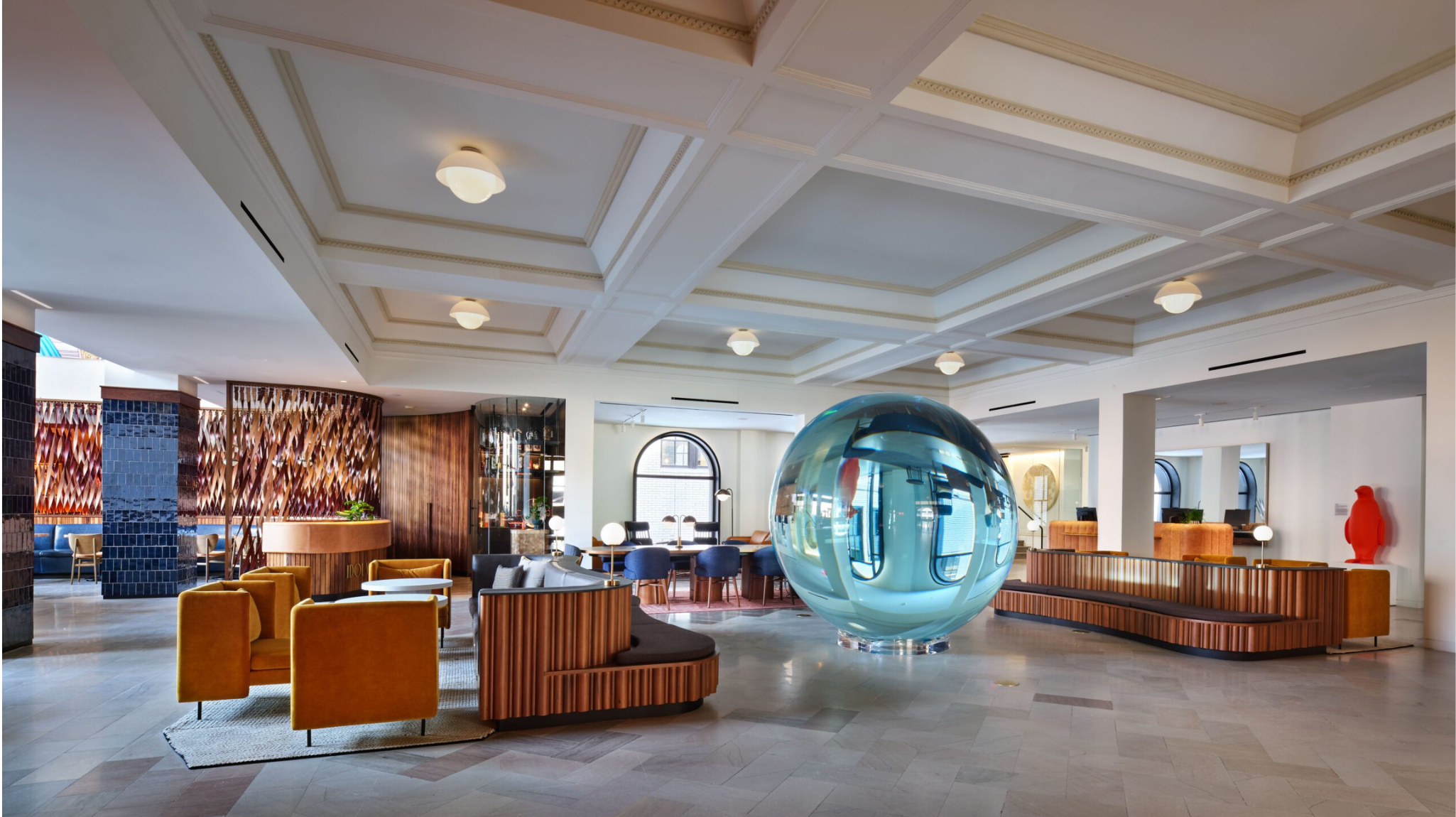What your clients aren’t telling you (but really want you to know)
By Howard Wolff
On behalf of those providing hospitality design services, I asked 20 clients what they want designers to know that they aren’t telling them directly. Six big themes emerged.
1. “I’ve got a pretty good bullsh-t detector.”
At the marketing stage, don’t show too much un-built work; clients know that anyone can produce an impressive rendering. They want to see built work and relevant projects.
Several clients mentioned that they have seen the same project in multiple presentations … with credit taken by the firm of record, by the lead designer who worked on the job (and since started his/her own company), and by the project manager who now works for a competitor. Explain your role precisely and honestly.
Your reputation as a firm founder and/or design leader may have gotten you to the shortlist, but don’t tell clients you’re going to be intimately involved in their project when you’re not.
Ted Brumleve, responsible for Wyndham Hotels & Resorts’ managed brands, advises, “Bring the ‘kids’ [from the staff] and/or let me know when I can meet them. I want the opportunity to build rapport with the people who will be doing the actual work on my project.”
2. “Don’t suck up. Speak up.”
Despite the adage that the customer is always right, clients want you to tell them when they’re veering off course, according to Raul Leal, ceo at Virgin Hotels. “My advice to designers, when they don’t agree with where we we’re headed: They should say, ‘We’ll do what you want us to do, but we think you’re on the wrong track and here’s why.’ Then, document that conversation.”
And Brumleve adds this observation and advice. “Don’t try to hide bad news, and don’t let it fester. Bad news does not improve with age. Tell us if something is wrong and get it out on the table early; otherwise, it will only get worse.”
Adherence to schedules is also a priority for your clients. Be honest and upfront about what’s possible. As Shawn McGowan, senior director of global food and beverage brand dervices at Hilton Worldwide, notes, “My concern is about meeting deadlines. If it’s going to take longer, tell me. I’d rather get it right than have to go back and fix things later.”
3. “Show me.”
Demonstrate that you can think on your feet. Several clients lament that the ability to sketch by hand is becoming increasingly rare. How ironic is it that the client is the one who pulls out a pen in a meeting and sketches some ideas?
Carl Kernodle, vice president planning and design at Hyatt, wants to see “sketches and models that make it clear where we’re headed.” He thinks it’s a shame that architects no longer draw by hand and a mistake not to provide physical three-dimensional scaled models. “A tangible model that a hotel executive can pick up and look at is worth the money and effort.” Kernodle’s pet peeve: “Don’t tell me you can’t do something. Find a way to do it. The art of problem solving and design thinking are getting lost.”
Several hospitality clients commented, as well, on the diminished quality of construction documents. A more detailed set of drawings means fewer questions on how to build the job and fewer problems for the owner and operator once the project is built.
With a good set of documents, you get a clear sense of what the building will look like, how it will be constructed and how much it will cost. Asking if he sounded old by saying so, Kernodle opines, “Remember the day that a working drawing had enough information on it that you could actually understand how the building is to be built?”
4. “It’s your job to know what I need.”
It’s not about building a monument to yourself or winning a design award. Dana Kalczak, vice president of design at Four Seasons Hotels and Resorts, puts it bluntly: “I dislike it when architects design to gratify their egos rather than creating thoughtful buildings that accommodate users in functional yet inspiring spaces.”
“And, more specifically,” says Kalczak, “I do not have much patience for design that values form over function. Beauty should be the goal, no question, but the user’s comfort, wellbeing and productivity should always be the starting point.”
“Let clients know that you understand the market they are trying to serve,” advises Barry Wallace, executive vice president of hospitality services, Outrigger Enterprises Group. “You need to demonstrate that you know how length of stay and mix of visitors affect design. For instance, geographic origin and purpose of visit impact size and layout of guest rooms as well as selection of furnishings and amenities.”
As architects and designers, you also need to demonstrate how you can meet the client’s financial and operational goals. “Owners want to know that their designers share responsibility for making the budget,” says Brumleve. “The client wants to see increasing detail on scope and spend alignment. Designers should validate budget conformance from the start and through all phases of a project.”
And when it comes to value engineering, offer cost-containment alternatives that don’t lobotomize the project. When there is a need to cut, make sure that the concept and design intent don’t suffer.
5. “Get your act together and hold on to your good people.”
Staff turnover is not only costly to you; it has an impact on your clients and their projects.
One client noted, “The lack of continuity and coordination amongst team members is a problem. It wastes a lot of time and money.”
Several observed that while it’s commonplace for designers to change firms, they feel that there is more that you can do to keep your key people.
On a positive note that indicates clients know more about what goes on inside your firm than you think they do. Some offered this unsolicited advice:
“Groom your people. Invest in them. Equip them with the right support. Help them grow with the company, and you’ll reduce turnover.”
“My advice would be to continue to foster the creative atmosphere while adding a little order to the chaos. Manage clients, engage the staff, and provide clear career paths and opportunities for advancement.”
6. “Don’t take us for granted.”
Your clients understand the shiny-object syndrome and the enticement of the next job. But they want to know that you value them.
One, who prefers to remain anonymous, shares this story: “We had a good relationship with a firm and gave them a lot of repeat business. We never even had them compete for our work. They screwed up big by taking us for granted and have lost over $1 million in design fees so far this year that we’ve given to another firm. They lost our business but never came and talked to me. How crazy is that?”
And while it’s important to ensure strong communication with existing clients on current projects, it’s also up to you to stay top-of-mind and relevant between projects.
Here’s some advice from one client: “Architects and designers could do a better job marketing by staying in touch with us, perhaps through a newsletter, providing updates on what they’re doing (via LinkedIn and email) and offering content that’s of value. For example, new approaches, tips, ideas, free advice … all based on their experience.”
And an executive from Starwood has this suggestion: “Keep me current on what you are thinking and doing. Find a creative way to stay in touch and let me know what’s new. (I’m not getting that from any other firm.)”
Today, it’s all about schedule and budget. Both are always tight. Clients’ operating margins are slim, but they still want inspired design. And they want to work with big-idea people who “get it.” They hire architects and designers who understand the overarching project goals and deliver. They expect you to listen on their frequency, to think like an owner, and to tell them the truth.
The message is clear. If you’re not sure what your clients want, ask—or ask an expert to ask for you. Design firm owners are often reluctant to ask for feedback directly. When they’ve engaged Full-Height Advice, as an objective third-party, to ask about the perception of their firms, I’ve gotten these reactions from their clients:
“I think that it’s great that the firm is doing this. I’m glad that they think enough of themselves to invest in their future and to be introspective, and I appreciate that they are interested in my opinion.”
“I love that they are doing this. It sends a strong signal about their own business acumen, brand awareness, and interest in growth.”
“I applaud them for considering how their firm is perceived and how they can improve.”
“Thanks for doing this survey for them. They’re good people and deserve to be successful.”
“The fact that they hired you to conduct this survey speaks well of them. They’re proactive. That’s smart.”
Howard Wolff, is the founder and most senior person of the strategic marketing consultancy Full-Height Advice.








